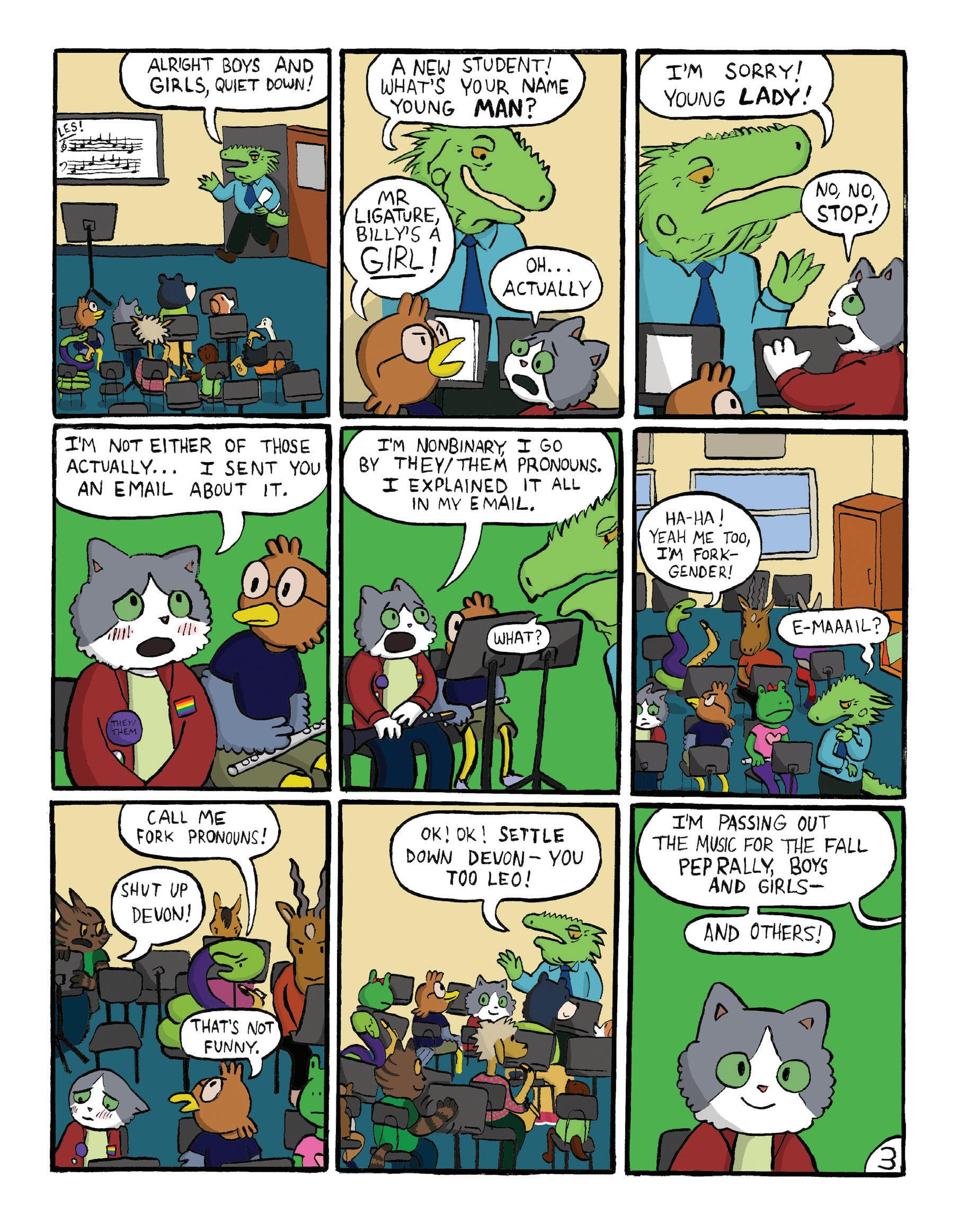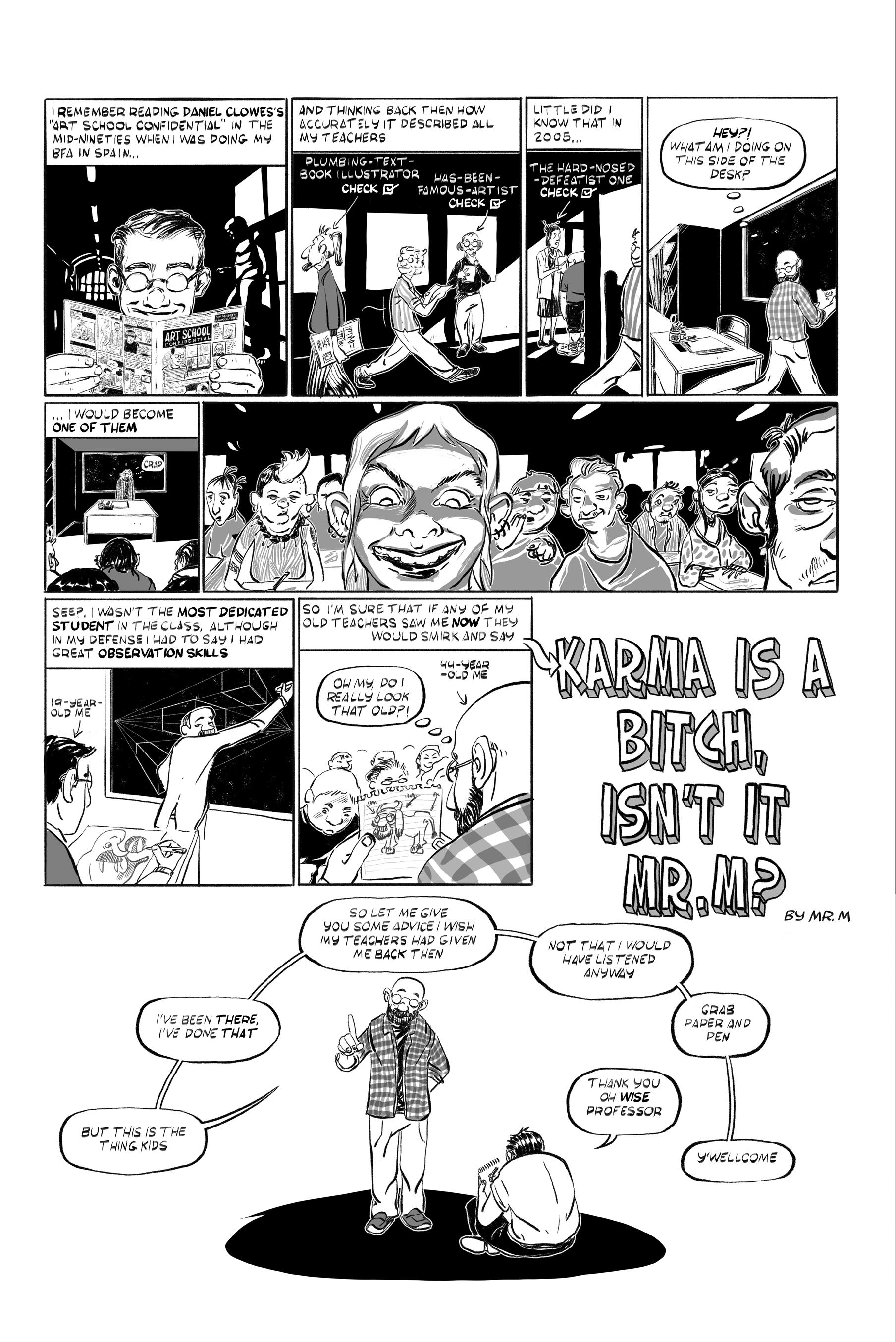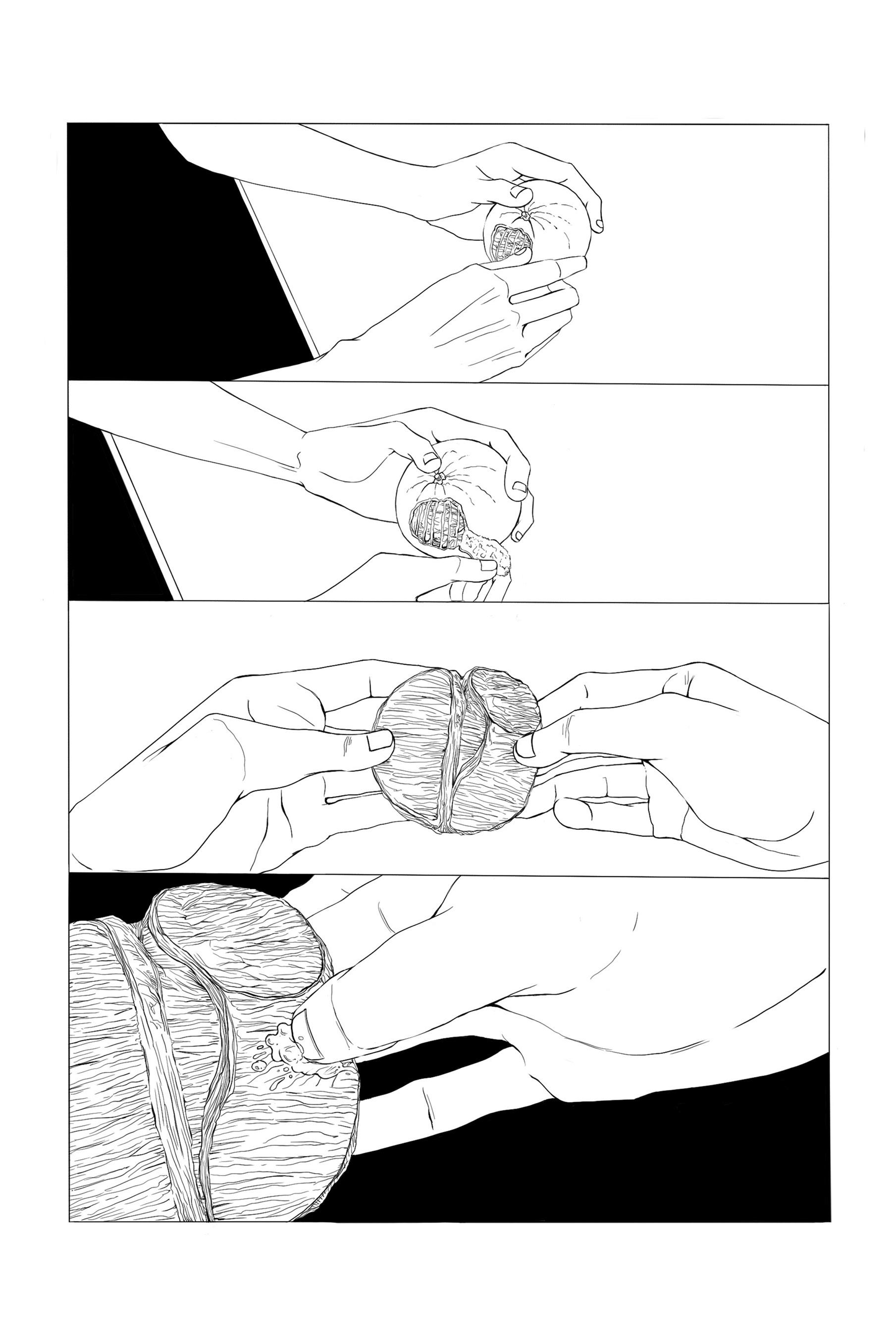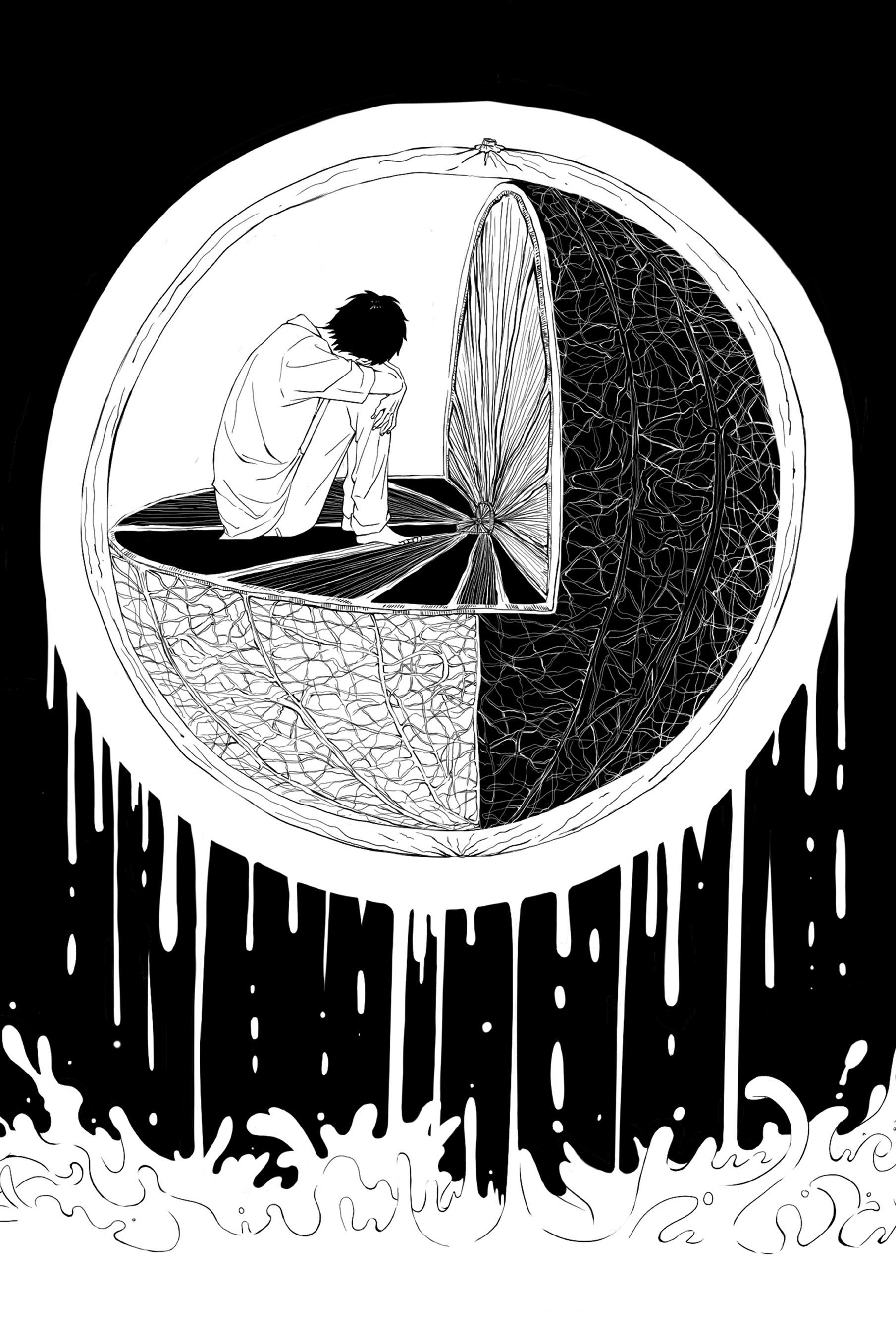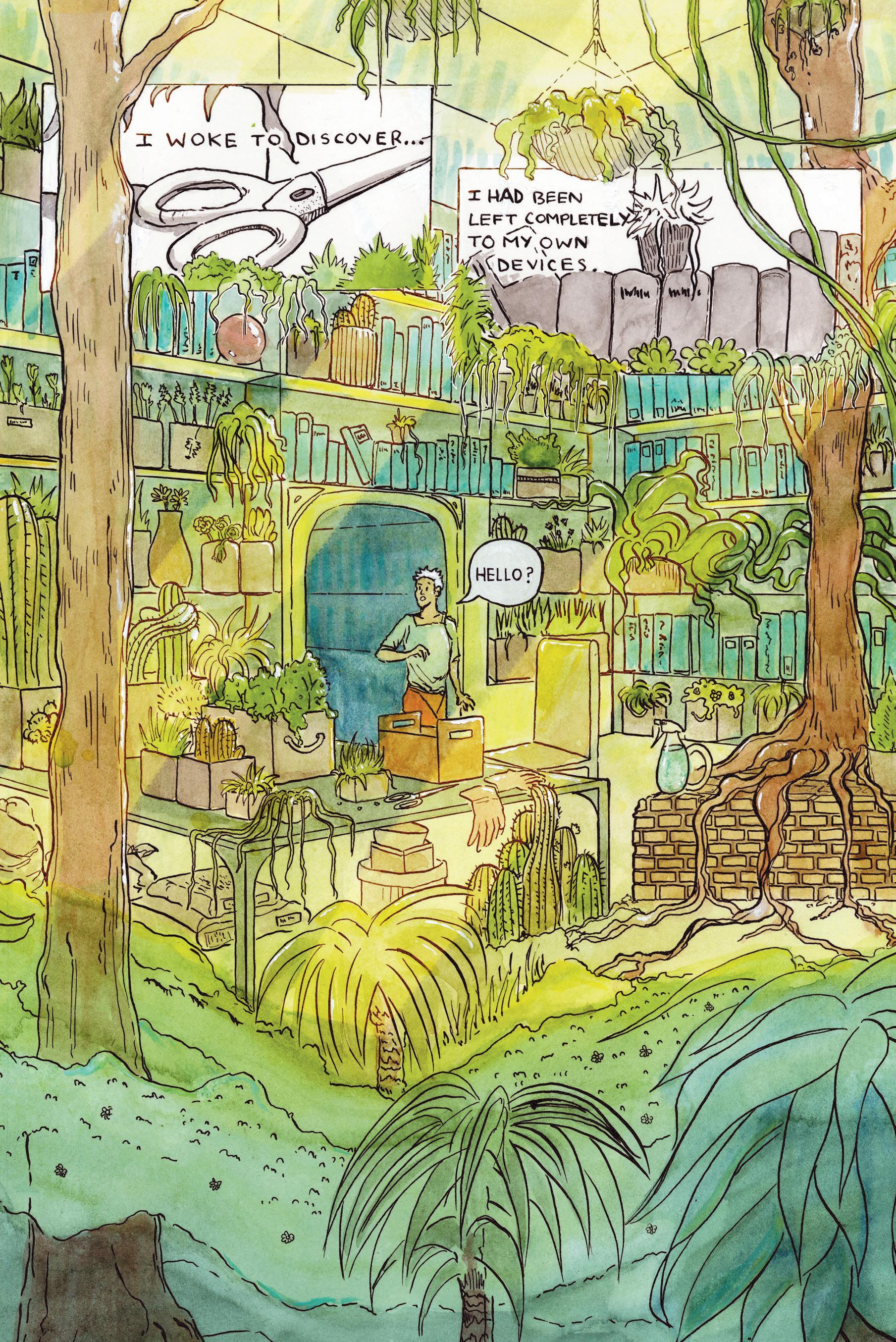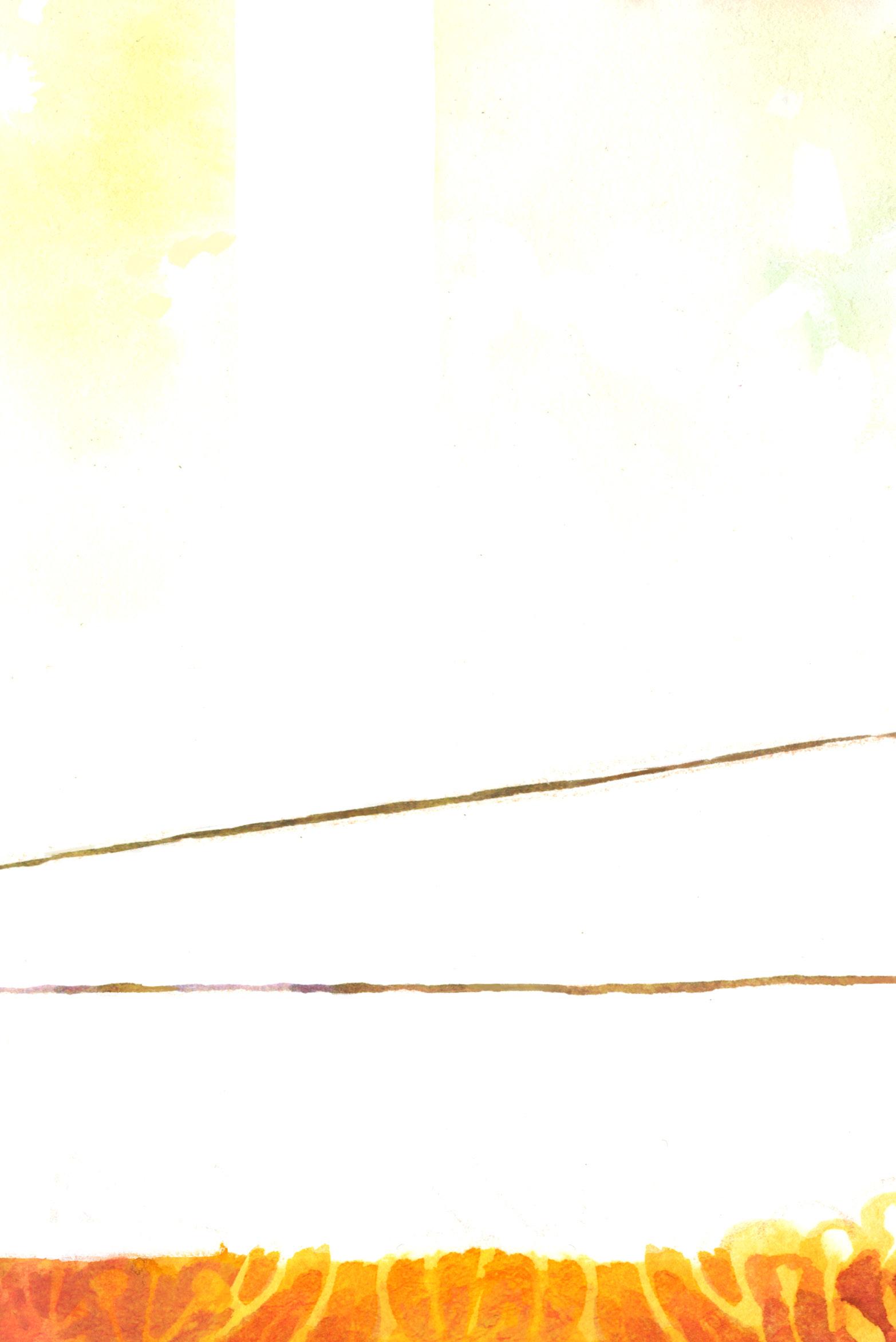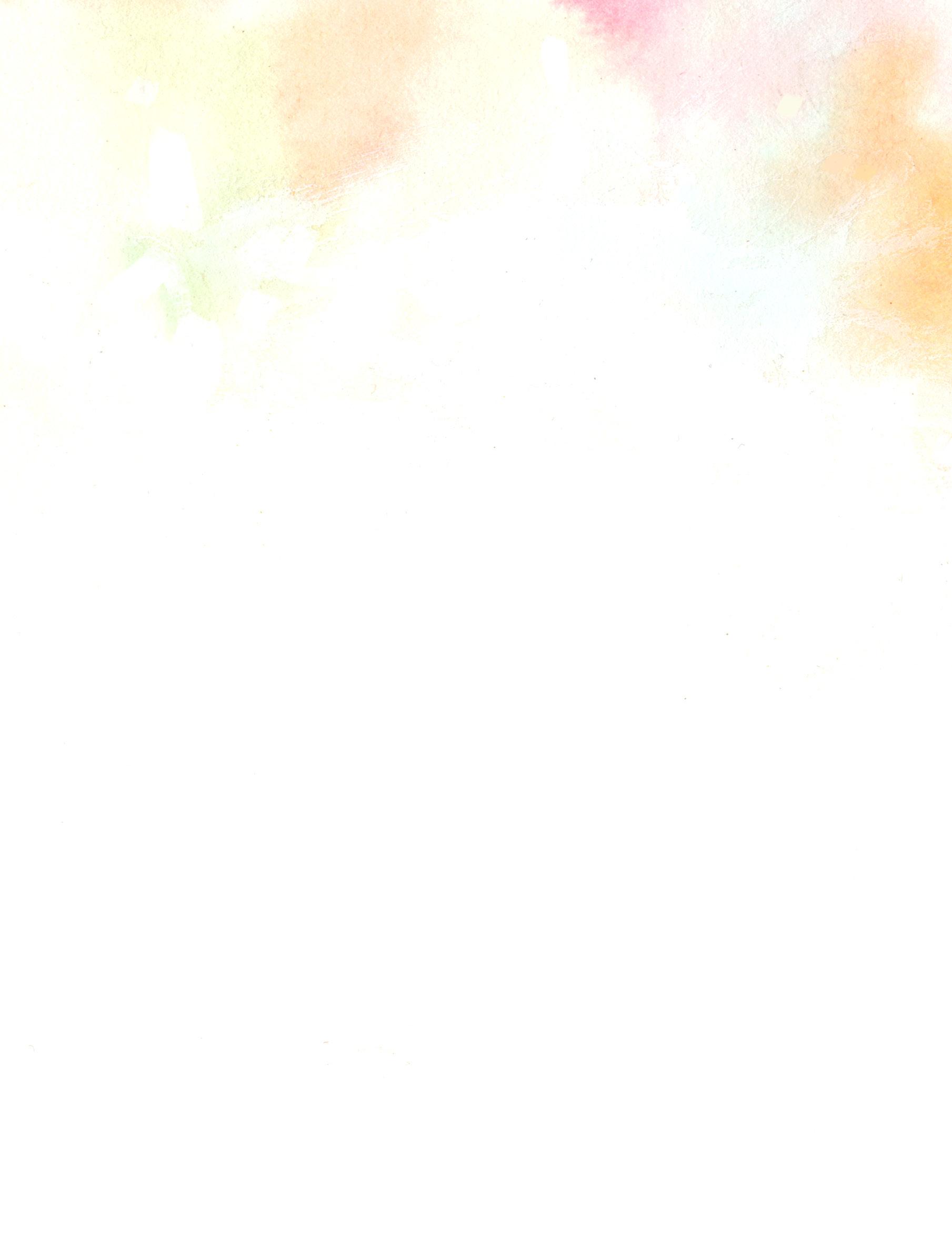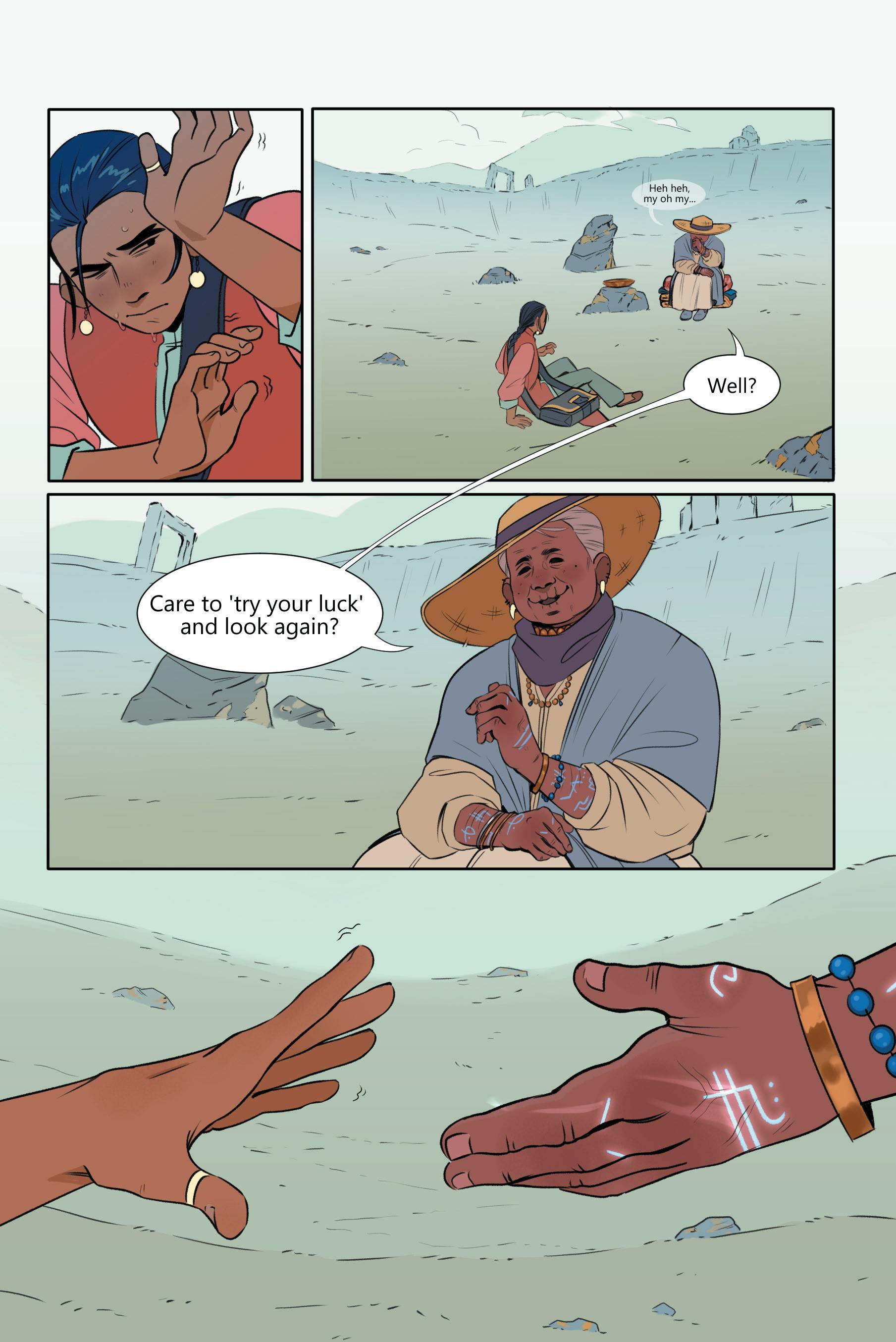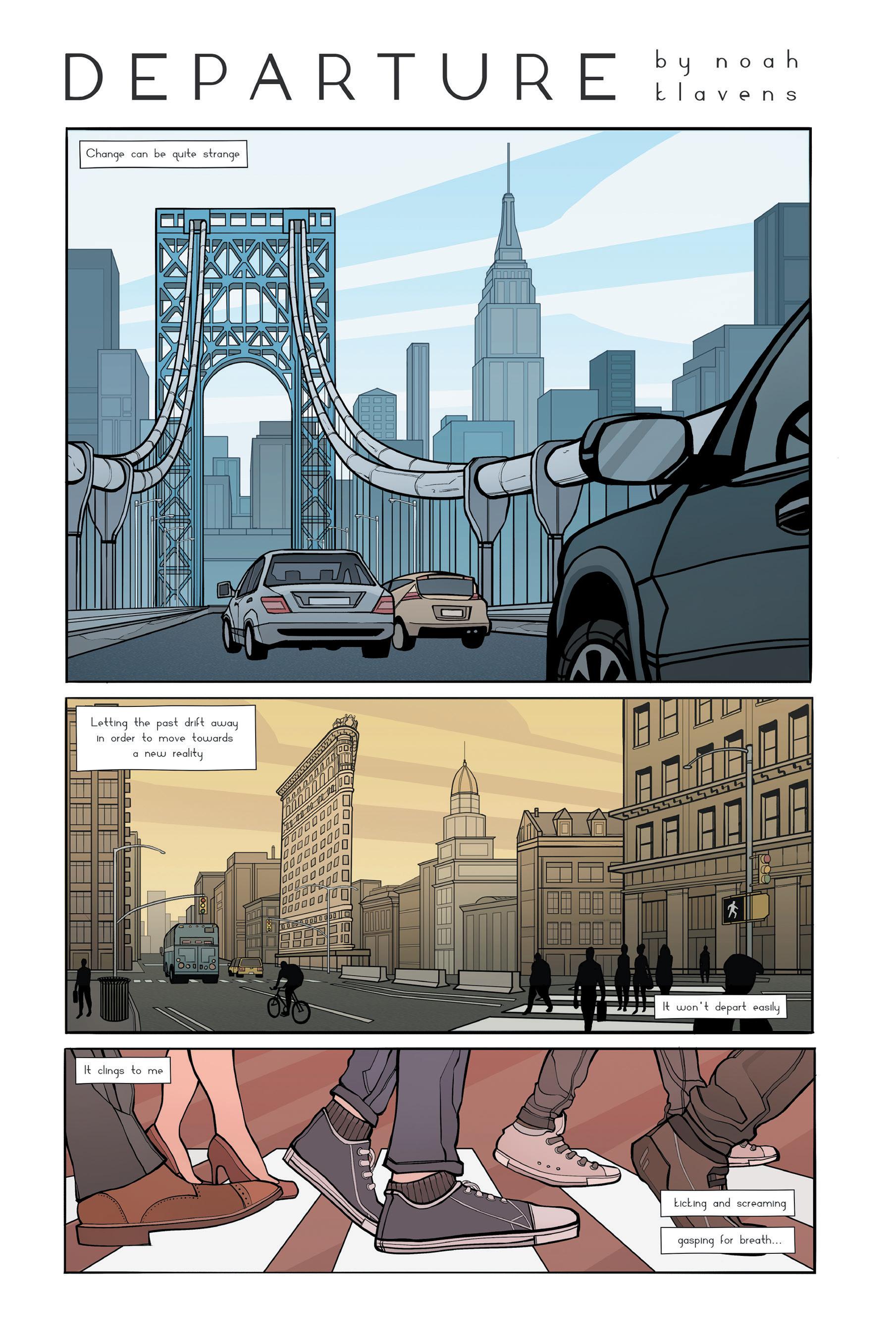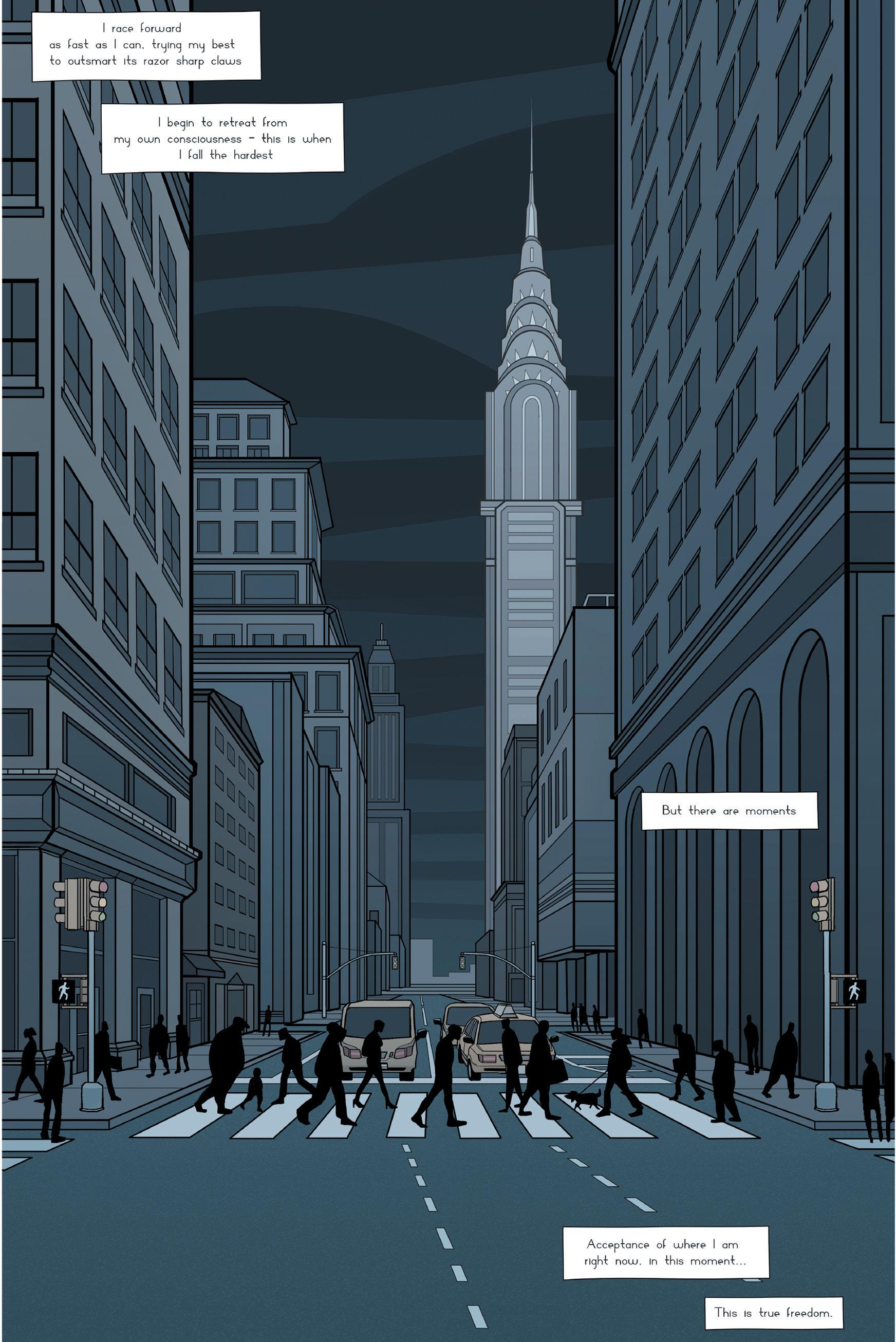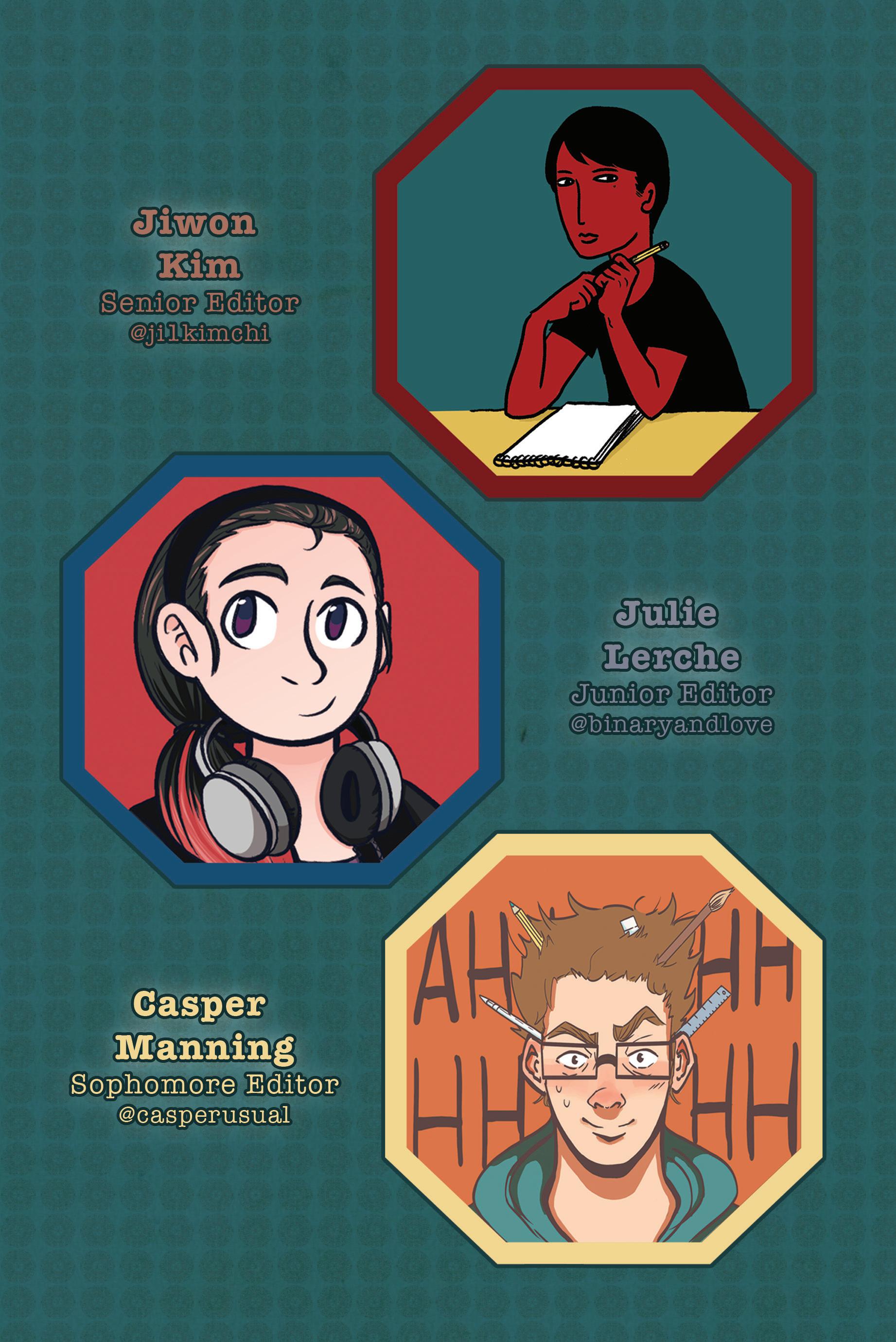Matt Forsythe
Matt Forsythe is an illustrator and a comic artist from Montreal, Canada. His comic Ojingogowas nominated for two Eisner awards and won a Doug Wright award for best experimental comic. He was the lead designer of AdventureTime, and has made numerous picture books such as TheGoldLeaf, and TheBad Mood&TheStick.
What is your typical day like as an artist? What is your daily routine?
I do administrative stuff in the morning. Contracts, emails, this interview—life stuff—then I usually go to the gym, get ripped and swole, and then come back and work in the afternoon and evening. If I’m writing, I go to the library, which I find infinitely inspiring.
I work in a studio with other artists and freelancers; I don’t have the discipline or calmness-of-mind to work at home. I think it changes the wiring in my brain to be not-aroundother-people for too long. After a few days in my apartment people become completely alien to me and I feel like I’m talking to meat machines. So working in a studio is healthier for me.
You didn’t go to art school. What made you decide to pursue art as a career? Do you wish you would’ve gone to art school?

I’m from a small factory town, and I didn’t know anyone could actually have a job being an artist. So I went to university for biology and then politics. But the whole time I was cartooning and drawing comics for the student paper. I travelled around to England and Ireland and Korea doing different jobs in my twenties—teaching, database programming, landscaping, waiting tables. But the whole time I was doing bad illustration on the side. Eventually I made a comic book that did well and I realized I could do this full time. When I was 30 I started working as an illustrator full time. Yes, I sort of wish I went to art school. SVA and Art Center are my two fantasy schools that I never went to. My friends who went to those schools are incredible and have taught me so much. I see a common rhythmic quality of lines coming from the people who went to SVA—Tom Herpich, James Jean, Rebecca Sugar, Phil Rynda, Becky Cloonan, Ian JQ, Tomer Hanu-
ka. And I think it goes back to James McMullen’s philosophies of volume and form in the life drawing classes there. One of McMullen’s prodigies now teaches life drawing at Art Center. I don’t think that’s a coincidence.
You’re well known for your rich mixed-media illustration with beautiful colors and texture. How did you come upon your current style?
I made a mistake I think a lot of artists make—which was trying to get Photoshop to look like natural media.
I was working in a studio in Montreal with Isabelle Arsenault, who worked with natural media and I wanted to have that direct relationship with my paintings—one that wasn’t mediated by pixels or the limitations of whatever software you were using. I spent months and years trying to get photoshop to give me something that looked like cut paper
and paint and pencil. And then one day it dawned on me to use real cut paper, and paint and pencil.
It seems obvious right? But just look on instagram to see how many artists still don’t get this.
I found a painting approach that I loved—but then I got a job in animation. So I moved to L.A . for three years and had to work on a computer for the show I was working on. When I left animation, I thought maybe I would quit art completely—but I tried using paints and it felt wonderful. I’m still trying to understand my paints and it’s a very rewarding process. I’m always trying to spend less time on the computer.
What’s your favorite color?
[*squints*] Ok, so maybe this is a facetious question - but I have noticed that I don’t like tertiary colours. If they must be there I like to mix them. And not mix them too much. The same way you shouldn’t overmix cake batter. Their component colours should still be there. Beyond that, I do think people get so
caught up on hue. The main things that matter to me are value and temperature. These are the things to me that most affect the mood of a piece.
You started off with comics, and then you worked on AdventureTimeas a lead designer, and now you’re mostly doing picture books. Can you tell us how that transition has been for you? How do you think Animation translates into comics or illustration?
I learned so much from animation. I learned from Adam Muto (Adventure TimeShowrunner) and people like Tom Herpich and Jasmin Lai and Tiffany Ford and Phil Rynda and Danny Hynes. These people taught me about volume and motion and composition and colour and perspective. And how those elements govern even what we might consider very graphic illustrations.
So when I moved back to painting for picture books, I found my sense of com-
position and volume was much stronger. I work in what some might consider to be a very flat, graphic style, but I think about volume every moment I’m working on a piece—and that comes from working in animation.
I assume that your approach for doing these things were all different. I think comics and illustration can be more lonesome whereas working in animation is more of a collaborative effort. What kind of working habits did you develop working in these three different fields and how is your approach different in each of them? And what were you able to get out of in each of these things?
Yeah, like in the hierarchy I would say comics are loneliest—because it’s long stretches of very independent work— and animation is the most gregarious because it’s short stretches of very collaborative work.
The picture book industry is in- between. Animation really taught me about working on a tight deadline. I’ve worked on a bunch of shows since Adventure Time and I try to deliver my work immediately. Because, there is a good chance everything will need to be revised and they’ll need to be done by that night or the next day—because the whole episode will have to ship that week because a studio in Korea or the Philippines — where people are working harder than you can even imagine—are waiting for your designs or storyboards. So if you’re late, they may not get to see their families that weekend. So deadlines are important or you screw over a lot of hard-working people.
Working as a manager in animation, I got see the pressures on both sides of the assignments. I’ve also learned that not only am I not particularly good at editorial work—but I don’t particularly care about it either. Those things are probably linked.
You lived in Korea for a while. Do you think there are cultural influences that you were able to bring into your work?
Well, Korea is why I’m an artist. I was a complete hack until I lived in Korea. When I was teaching in Korea, I would visit Kyobo Bookstore every weekend in central Seoul and I was blown away by the manhwa and picture books I saw there. The art was so expressive and bold and it was unlike anything getting published in the west. I was reading these books with my students. And I loved teaching but I knew I couldn’t be a teacher for the rest of my life because teaching is exhausting and
stressful in ways that only other full time teachers understand. So I started drawing every night and uploading my comics and paintings to the EatPoo forums (RIP). At first, my only goal was to make a comic I was proud of but then as I started publishing things, it seemed possible to work as an artist full time.
You recently revisited Korea after 10+ years! How was that trip, and were you able to find something that surprised you visually?
That trip was very emotional! I ate samgyetang! Korea has changed so much in the last decade. Kyobo bookstore is more corporate and less cool, but now there are these amazing indie bookstores like Veranda and Ghost Books and Your Mind that publish and carry amazing artists. You can follow these shops on Instagram—I recommend it.
What kind of visual artists working outside the picture book medium speak to you? Any current interests?
I think now that I’m writing, I’m most interested in writers and filmmakers. Hirokazu Kore-eda is my favourite.
For students who are graduating and pursuing this field, do you think it’s more easy to be an illustrator when you are represented by an agent? How is the process of getting an agent like?
I have a literary agent, who I love. She represents me for all my book and media work. But I wouldn’t seek out an agent until you need one. My recommendation is to go deep into your
work and to wait until you have an offer from a publisher—which you will get, because they are actively looking for people who go deep into their work—and then bring that offer to the agent and ask them if they’ll represent you on the project and go from there. You should know which agents and publishers you want to work with because you’ve been following their work and you know the kind of work they make and how it relates to what you have to offer.
Also, in my opinion, it’s a myth that literary agents are there to get us work. We always have to do the work of making exciting, relevant work that connects with people. That’s one of our ongoing challenges as artists. The agent is there to negotiate our contracts and represent our interests and make sure the contract serves us as artists, as well as serving the publisher.
They also can offer valuable industry advice. I’m always thinking about the overlap in the Venn diagram between
“what the market wants” and “what I want to make” as an artist, and my agent can help me to see that picture.
What projects are you working on currently?
I just finished writing and illustrating a picture book called Pokko and the Drum - it’s about a family of frogs that lives in a mushroom. It’s coming out in fall, 2019, from Simon & Schuster.
Thank you so much for this interview Matt!






